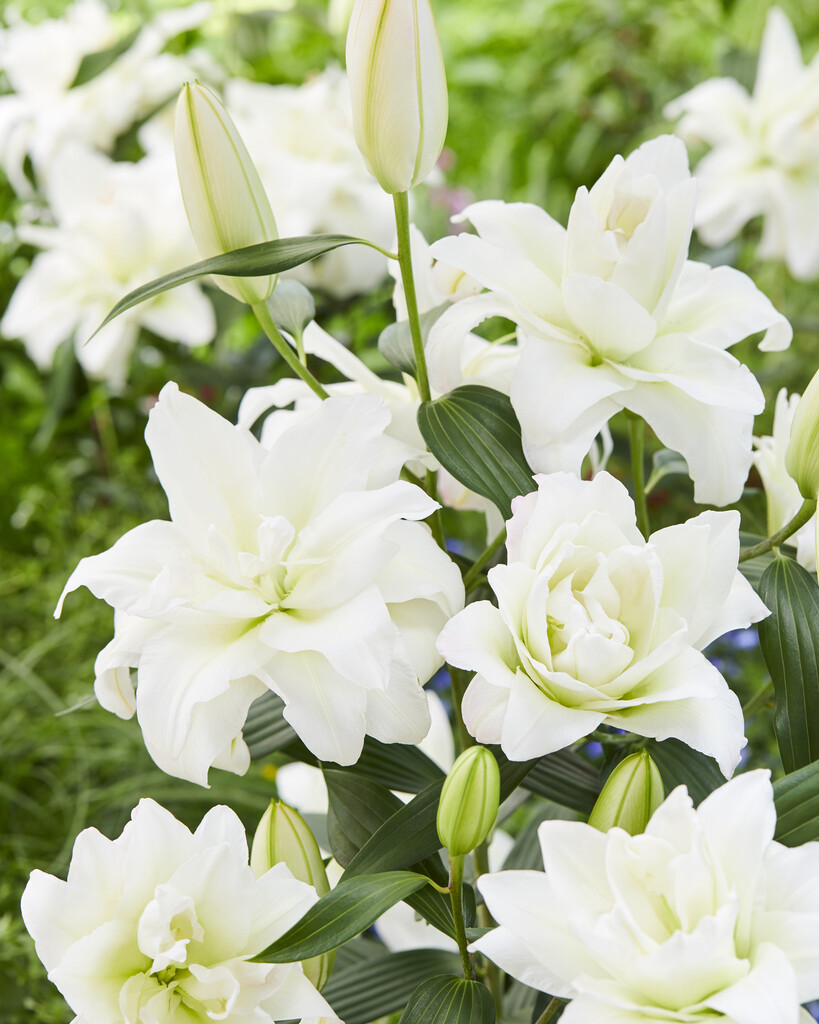Size
Ultimate height
0.5–1 metresTime to ultimate height
2–5 yearsUltimate spread
0.1–0.5 metresGrowing conditions
Moisture
Moist but well–drainedpH
Acid, NeutralColour & scent
| Stem | Flower | Foliage | Fruit | |
| Spring | Green | |||
|---|---|---|---|---|
| Summer | White | Green | ||
| Autumn | ||||
| Winter |
Position
- Full sun
- Partial shade
Aspect
East–facing or South–facing or West–facing
Exposure
Sheltered Hardiness
H6Botanical details
- Family
- Liliaceae
- Native to GB / Ireland
- No
- Foliage
- Deciduous
- Habit
- Columnar upright
- Potentially harmful
- Ornamental bulbs - not to be eaten. Wear gloves and other protective equipment when handling. TOXIC to pets if eaten (cats) - see the HTA guide to potentially harmful plants for further information and useful contact numbers
- Genus
Lilium are bulbous perennials with erect stems bearing whorled or spirally arranged leaves and terminal racemes or umbels of bowl-shaped, trumpet-shaped, funnel-shaped or turks cap shaped flowers, often fragrant, and white, yellow, orange or red
- Name status
Accepted
- Horticultural Group
- Lilies within this group have bowl-shaped flowers
How to grow
Cultivation
Grow in well-drained soil enriched with leaf mould or well-rotted organic matter. Ideally, grow in full sun with the base of the plant in shade. Suitable for containers, see growing lilies for more advice
Propagation
Propagate by division or scaling, see bulb propagation for details
Suggested planting locations and garden types
- City and courtyard gardens
- Cottage and informal garden
- Patio and container plants
- Cut flowers
- Flower borders and beds
Pruning
Deadhead after flowering. Cut back stems when foliage dies down
Pests
May be susceptible to lily beetle, aphids, slugs, thrips, leatherjackets and wireworms, as well as small mammals such as rabbits and voles
Diseases
May be susceptible to various fungal infections, including grey moulds, and virus diseases; see lily diseases for more details
Get involved
The RHS is the UK’s gardening charity, helping people and plants to grow - nurturing a healthier, happier world, one person and one plant at a time.
